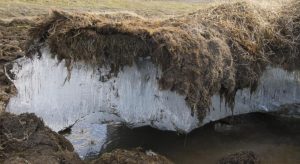
21 interesting facts about sandstorms
- 👁️ 369
Sandstorms, also known as dust storms, are powerful meteorological phenomena common in arid and semi-arid regions around the world. These storms can rapidly reduce visibility, transform landscapes, and impact air quality. Caused by strong winds lifting vast amounts of sand and dust into the air, sandstorms can travel for thousands of miles and affect regions far from their origins. They play a significant role in shaping the environment and influencing the ecosystem. Understanding sandstorms is crucial for preparing and mitigating their effects on human health and activities.
- Sandstorms are primarily caused by intense wind forces that lift particles of sand and dust from the ground into the atmosphere.
- These phenomena occur most frequently in desert regions such as the Sahara, the Arabian Peninsula, and the Gobi Desert.
- A sandstorm can carry particles thousands of kilometers; for example, dust from the Sahara is known to reach the Caribbean and even influence the soil quality there.
- The visibility during a severe sandstorm can be reduced to less than a few meters, posing significant risks for transportation.
- Sandstorms contribute to soil erosion by removing topsoil from arid lands, but they also deposit nutrient-rich sediment in other areas.
- Health issues related to sandstorms include respiratory problems, eye infections, and at times, rare fungal infections from dust-borne pathogens.
- The frequency and intensity of sandstorms are thought to be influenced by climatic changes such as drought and land degradation.
- Sandstorms can also affect climate by transporting large amounts of mineral dust across continents, which impacts atmospheric temperatures and ocean nutrient cycles.
- The speed of wind required to lift particles into the air and cause a sandstorm typically exceeds 25 miles per hour.
- During a sandstorm, static electricity can build up and disrupt electronic equipment and communication devices.
- The mineral composition of the dust particles can vary, affecting the color of the storm; for instance, Mars experiences massive red dust storms.
- Ancient cultures sometimes interpreted sandstorms as supernatural events or omens due to their sudden appearance and overwhelming impact.
- Sandstorms can create large-scale natural hazards, leading to crop damage, disrupting ecological balance, and causing accidents due to reduced visibility.
- The duration of a sandstorm can vary from a few minutes to several hours, depending on the wind conditions and geographical features.
- Techniques to combat the effects of sandstorms include planting vegetation barriers, managing land use to prevent desertification, and using satellite technology for early warning systems.
- Large-scale sandstorms have significant effects on marine life when dust settles on water, altering nutrient dynamics and light penetration.
- In some regions, mud rain can occur when a sandstorm mixes with precipitation, causing muddy raindrops that can coat surfaces with a layer of dirt.
- Meteorologists use satellite imagery and ground sensors to monitor and predict the occurrence of sandstorms.
- Cultural impacts of sandstorms are evident in literature and art from desert regions, often symbolizing isolation or challenging conditions.
- Economic activities such as mining, agriculture, and construction can exacerbate the frequency of sandstorms through ground disturbance.
- Despite their destructive nature, sandstorms have shaped natural landscapes and cultural narratives, influencing both the environment and human resilience.
Sandstorms are a formidable force of nature with both destructive and formative capabilities. They serve as a reminder of the dynamic processes of our planet and the need for sustainable environmental management. Their study not only helps predict and mitigate their impacts but also enriches our understanding of earth systems and climatic interactions. The ongoing research and technological advancements continue to unravel the complex nature of sandstorms, aiming to lessen their adverse effects on human civilization and natural ecosystems.











